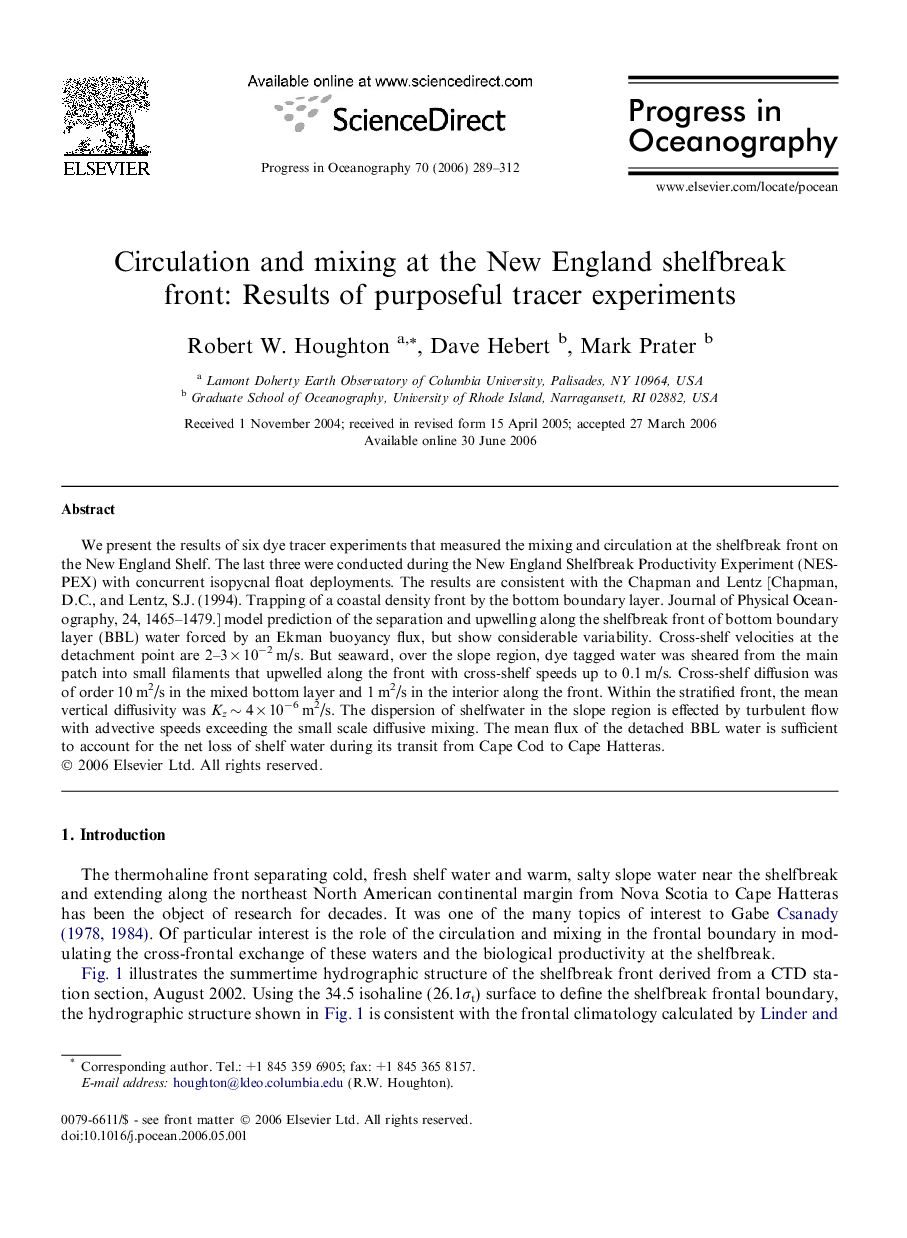| Article ID | Journal | Published Year | Pages | File Type |
|---|---|---|---|---|
| 4553952 | Progress in Oceanography | 2006 | 24 Pages |
Abstract
We present the results of six dye tracer experiments that measured the mixing and circulation at the shelfbreak front on the New England Shelf. The last three were conducted during the New England Shelfbreak Productivity Experiment (NESPEX) with concurrent isopycnal float deployments. The results are consistent with the Chapman and Lentz [Chapman, D.C., and Lentz, S.J. (1994). Trapping of a coastal density front by the bottom boundary layer. Journal of Physical Oceanography, 24, 1465-1479.] model prediction of the separation and upwelling along the shelfbreak front of bottom boundary layer (BBL) water forced by an Ekman buoyancy flux, but show considerable variability. Cross-shelf velocities at the detachment point are 2-3 Ã 10â2 m/s. But seaward, over the slope region, dye tagged water was sheared from the main patch into small filaments that upwelled along the front with cross-shelf speeds up to 0.1 m/s. Cross-shelf diffusion was of order 10 m2/s in the mixed bottom layer and 1 m2/s in the interior along the front. Within the stratified front, the mean vertical diffusivity was Kz â¼Â 4 Ã 10â6 m2/s. The dispersion of shelfwater in the slope region is effected by turbulent flow with advective speeds exceeding the small scale diffusive mixing. The mean flux of the detached BBL water is sufficient to account for the net loss of shelf water during its transit from Cape Cod to Cape Hatteras.
Related Topics
Physical Sciences and Engineering
Earth and Planetary Sciences
Geology
Authors
Robert W. Houghton, Dave Hebert, Mark Prater,
